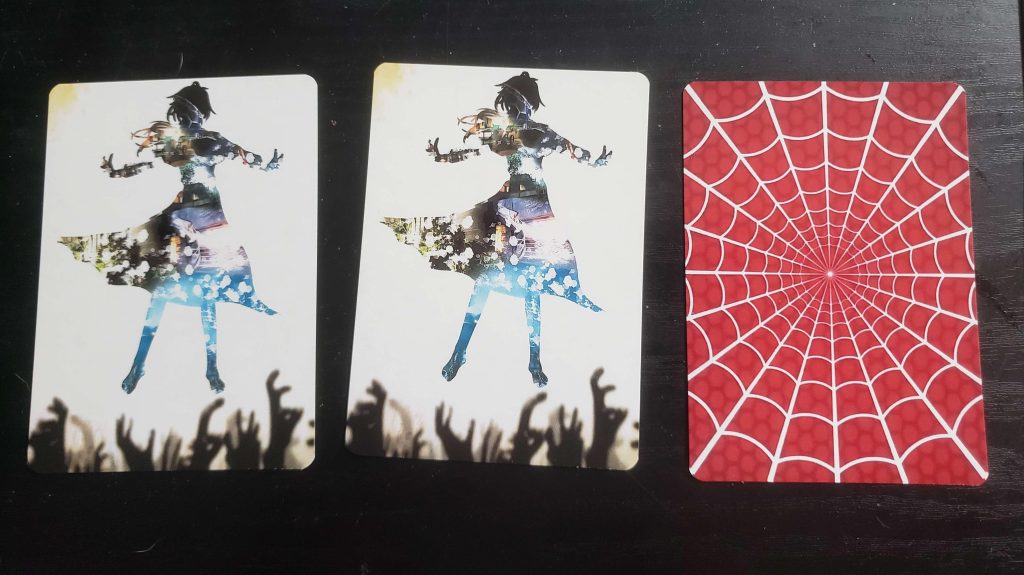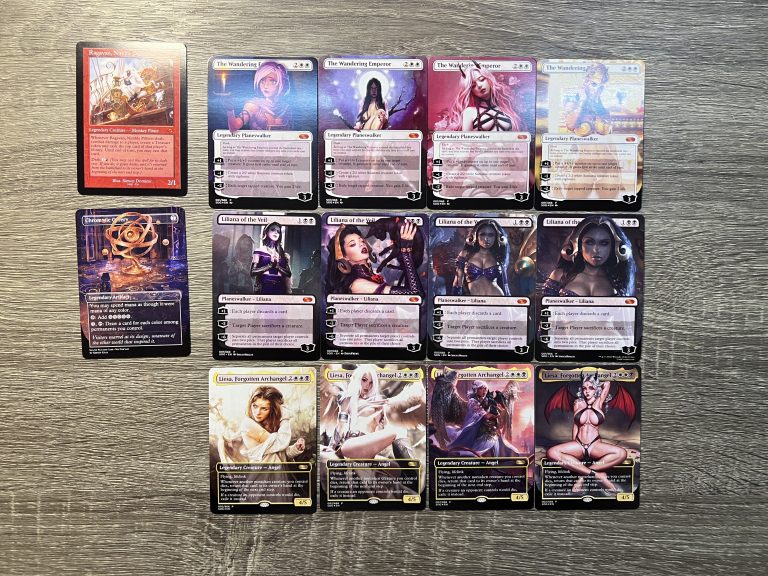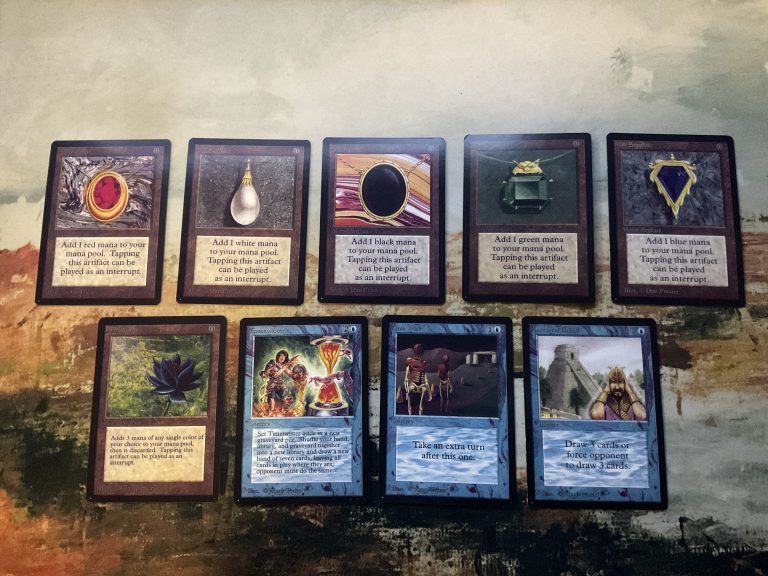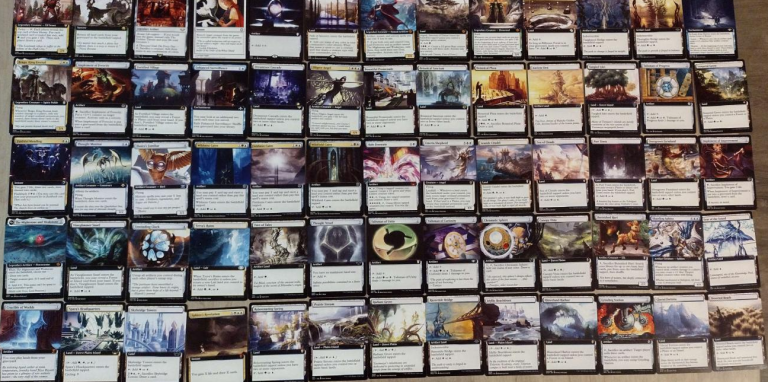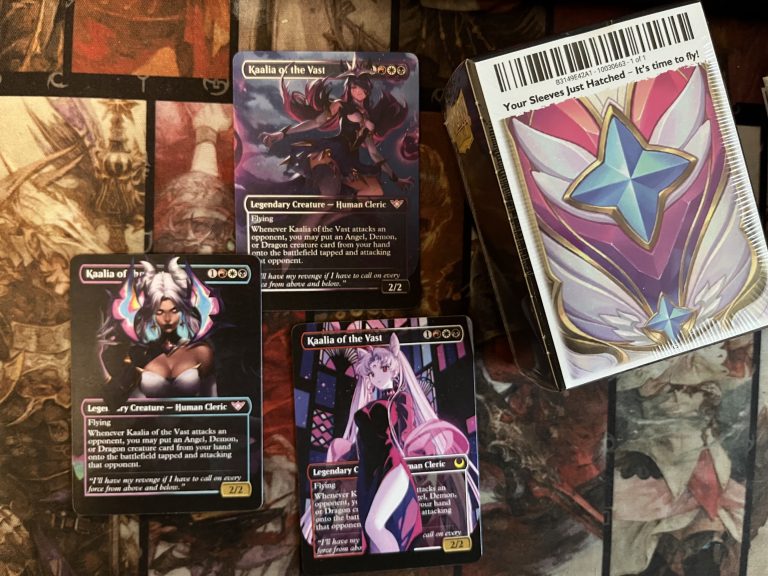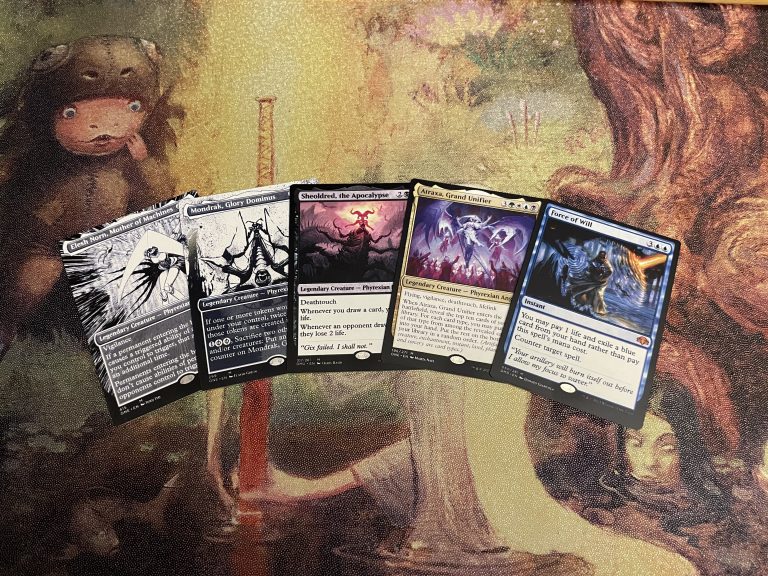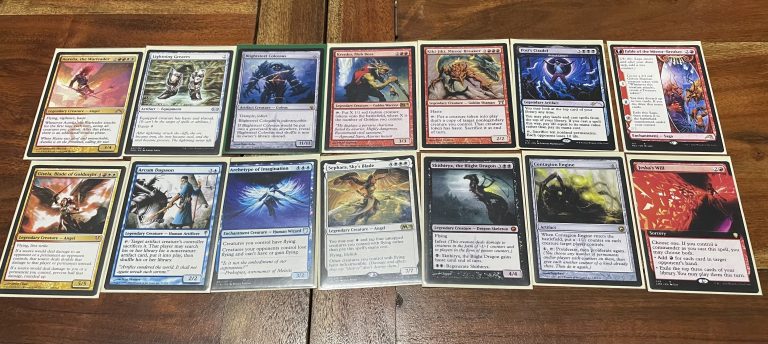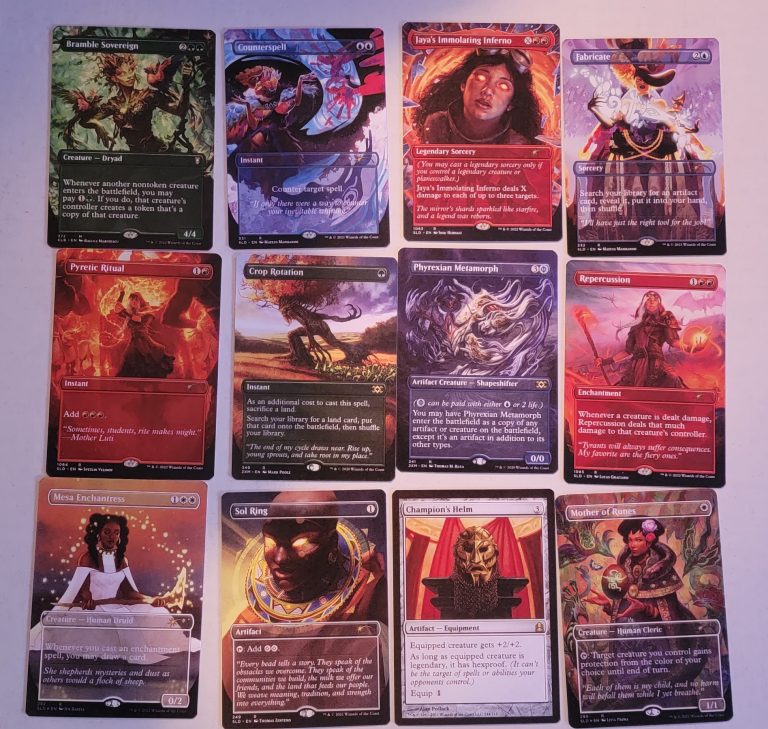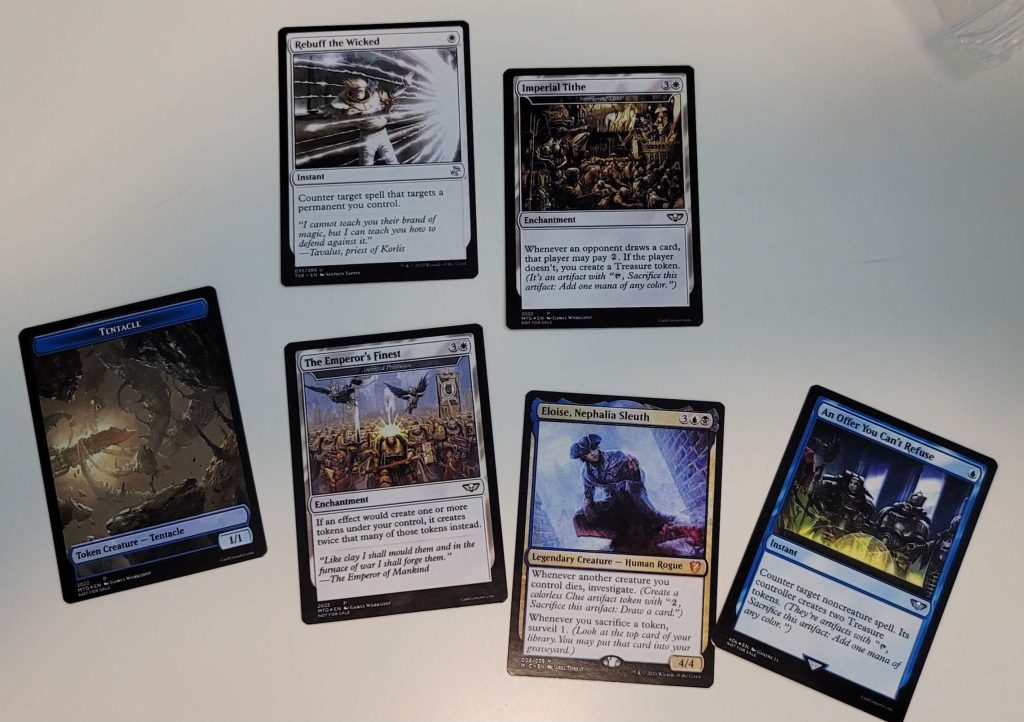Introduction
If you’re a fan of Magic: The Gathering (MTG), you know that building a powerful deck can be an expensive endeavour. Rare and powerful cards can cost a small fortune, and if you want to compete at a high level, you may find yourself spending hundreds or even thousands of dollars on cards. That’s where Mtg proxies come in.
In this article, we’ll explore the world of Mtg proxies, including what they are, how they work, and whether they’re legal. We’ll also look at some of the different types of proxies available, including Mtg proxy printing, mtg dual land proxies, mtg vintage proxies, mtg foil proxy cards, mtg holofoil proxies, mtg altered art proxies, mtg foil peel alter proxies, mtg vintage playtest cards, mtg colour-shifted proxies, and mtg foreign black-bordered proxies.
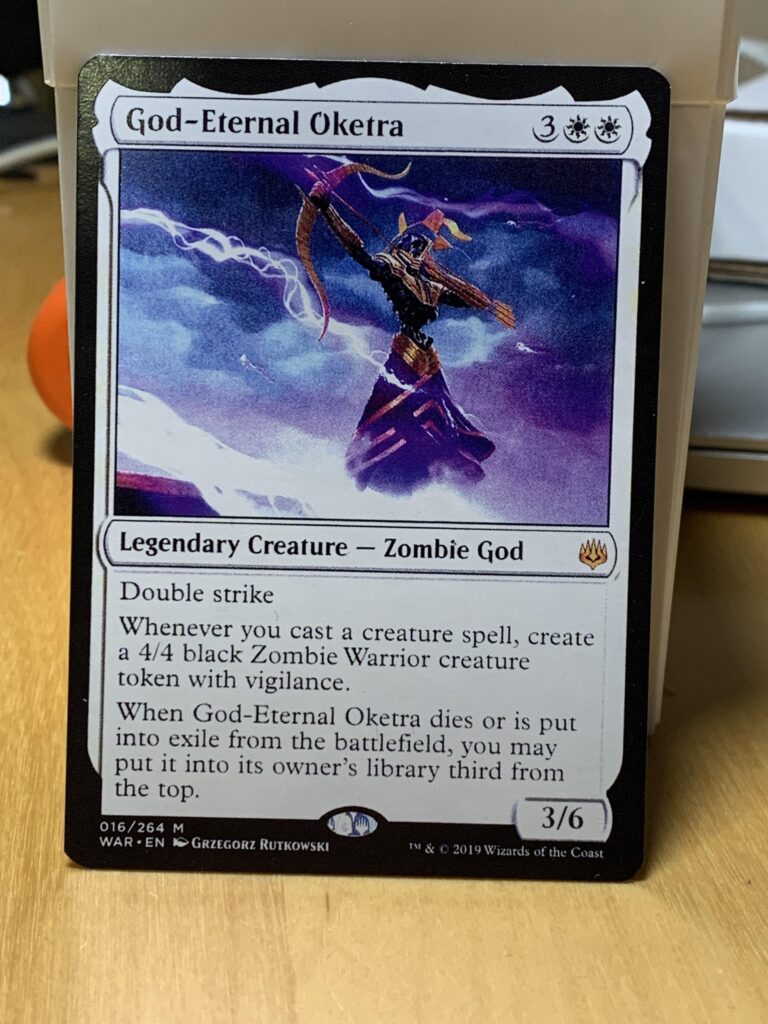
What are Mtg Proxies?
Mtg proxies are cards that are printed to look like existing Mtg cards. They’re typically used as a cheaper alternative to buying the real thing. Proxies can be created for any card, from the most common to the most rare. Some players even create proxies for cards that are banned in certain formats, allowing them to use those cards in casual play.
How Do Mtg Proxies Work?
Mtg proxies work by mimicking the look of an existing card. They’re printed on cardstock that’s similar to the real thing, and they feature the same artwork and layout as the original card. In some cases, proxies may also feature altered art or holofoil effects to make them look even more like the real thing.
Proxies are often used in playtesting, allowing players to try out new deck ideas before investing in the real cards. They can also be used in casual play or local tournaments, where players may not have access to expensive cards.
Are Mtg Proxies Legal?
The legality of mtg proxies is a bit of a grey area. The official Mtg rules state that only authentic Mtg cards are allowed in sanctioned play. However, many local tournaments and casual playgroups allow proxies, as long as they’re clearly marked and don’t have an unfair advantage over other players.
It’s worth noting that using proxies in sanctioned Mtg foil proxy cards is a popular type of proxy that replicates the look of foil cards. These proxies are often created by taking a non-foil card and adding a layer of foil to it. Some custom printing services also offer foil printing options, allowing players to create proxies that look just like the real thing.
Mtg Holofoil Proxies
Similar to foil proxies, mtg holofoil proxies mimic the holographic effect found on some Mtg cards. These proxies can be created using custom printing services that offer holofoil printing options, or by adding a layer of holographic material to an existing card.
Mtg Altered Art Proxies
Mtg altered art proxies are unique and visually striking proxies that feature custom artwork. These proxies are often created by taking an existing card and altering the art to create a new and unique design. Some custom printing services also offer altered art printing options, allowing players to create proxies with completely custom artwork.
Mtg Foil Peel Alter Proxies
Mtg foil peel alter proxies are a type of altered art proxy that uses a unique technique to create a foil effect. These proxies are created by peeling off the foil layer from an existing card and using it to create a new design on a different card. This technique can create some truly stunning and unique proxies.
Mtg Vintage Playtest Cards
Mtg vintage playtest cards are a type of proxy that are used for playtesting new decks. These proxies are often created using mtg proxy printing and feature custom designs and text to simulate new cards that may be added to a deck. Vintage playtest cards are not legal for use in sanctioned play, but they can be a valuable tool for testing new deck ideas.
Mtg Color-Shifted Proxies
Mtg colour-shifted proxies are a type of proxy that features altered colours to create a new and unique design. These proxies are often created by taking an existing card and changing the colour scheme to create a new look. Custom printing services also offer colour-shifting options, allowing players to create proxies with completely custom colours.
Mtg Foreign Black-Bordered Proxies
Mtg foreign black-bordered proxies are a type of proxy that mimics the look of foreign language Mtg cards. These proxies are often created using mtg proxy printing and feature the same artwork and layout as the original card, but with foreign language text and a black border.
Conclusion
Mtg proxies are a valuable tool for Mtg players who want to play with powerful cards without breaking the bank. While they may not be legal in sanctioned play, they can be a great way to playtest new decks, compete in local tournaments, or just have fun with friends. With so many different types of proxies available, there’s no limit to the creative and unique designs that players can create. Whether you’re using Mtg proxy printing, altering existing cards, or using Custom printing services, there’s a proxy out there for every player and every deck.
FAQS
Proxies are not allowed in sanctioned Mtg play because they can be used to cheat and gain an unfair advantage over opponents. Additionally, proxies can be used to circumvent the cost of purchasing expensive cards, which goes against the spirit of the game.
There is no specific number of proxies that is considered “too many.” Ultimately, it is up to tournament organizers and players to decide what is fair and reasonable. Some tournaments may allow a small number of proxies, while others may not allow any at all.
The cost of 1gb of proxies can vary depending on the provider and the quality of the proxies. Generally, high-quality proxies can be more expensive, while lower quality proxies may be cheaper. It’s important to do your research and choose a provider that offers reliable and high-quality proxies.
Proxies do not typically expire, but their usefulness may diminish over time. As new cards are released and the metagame changes, some proxies may become less relevant or less effective. Additionally, some tournaments may have specific rules regarding the use of proxies that may change over time.
There is no specific limit on the number of proxies that one person can hold. However, it’s important to remember that proxies are not legal for use in sanctioned play and should only be used for casual play or playtesting. Additionally, holding a large number of proxies can be seen as a violation of the spirit of the game and may be frowned upon by other players.
 Custom Gallery
Custom Gallery Proxy Booster
Proxy Booster Discord
Discord